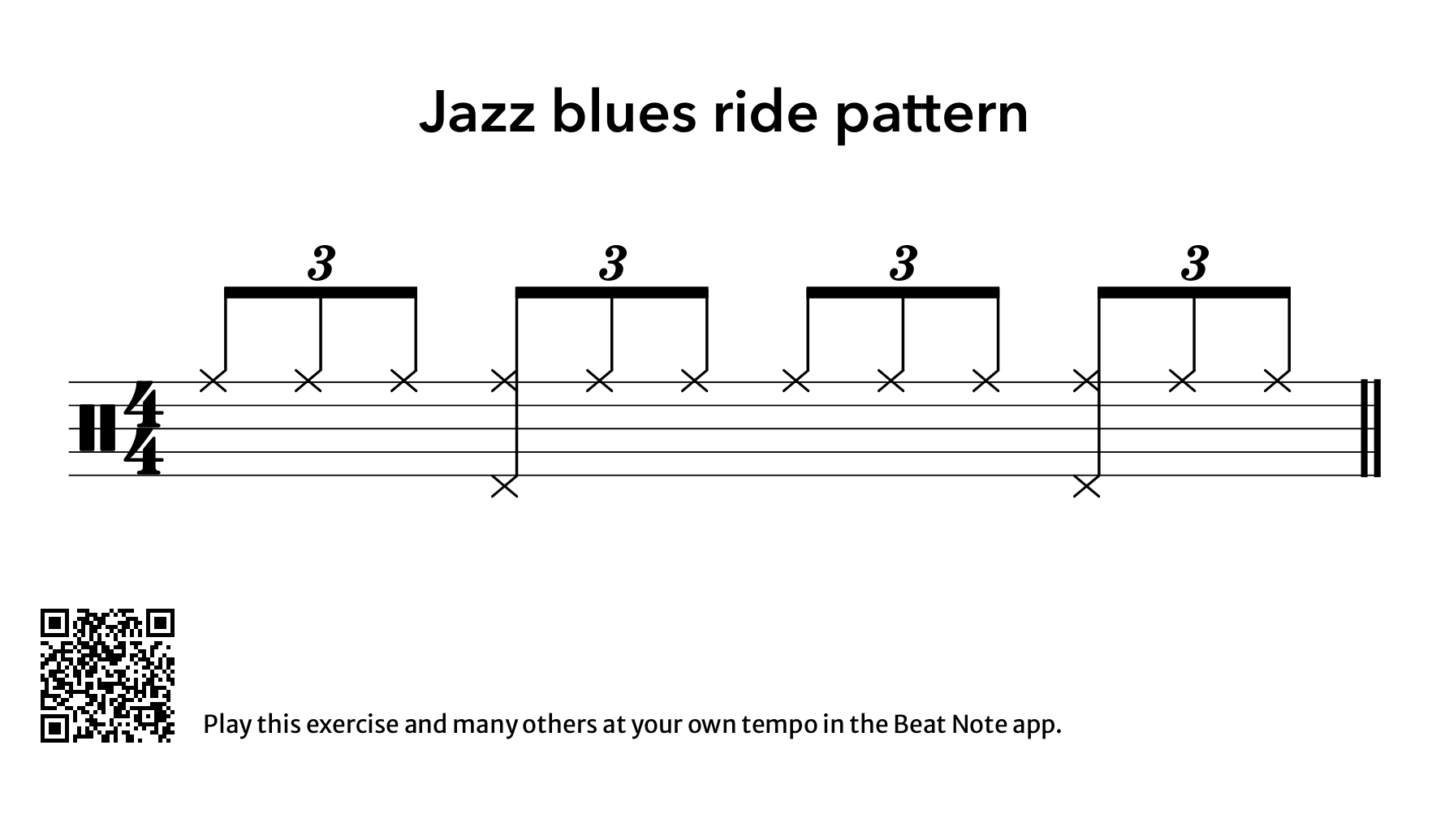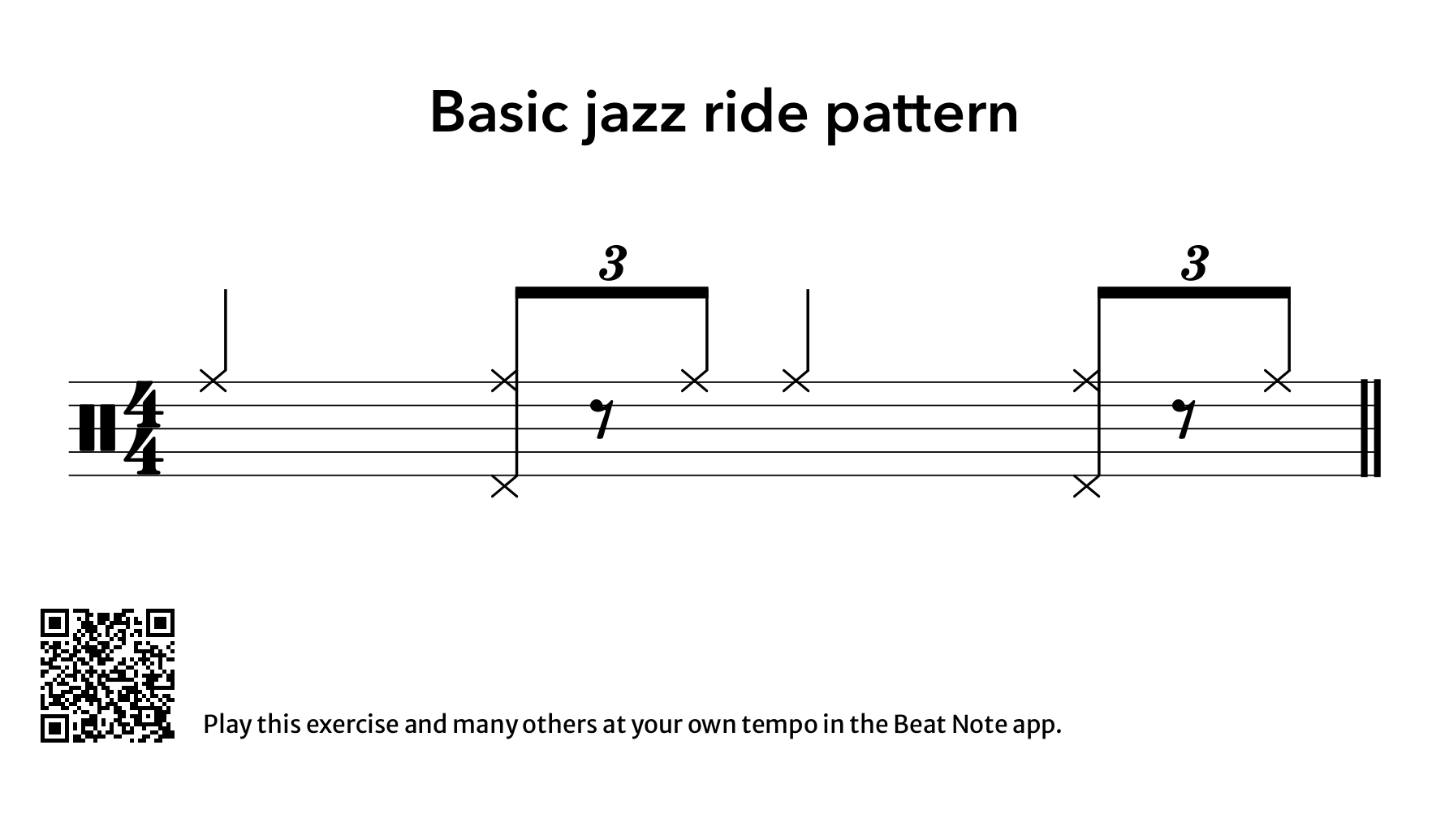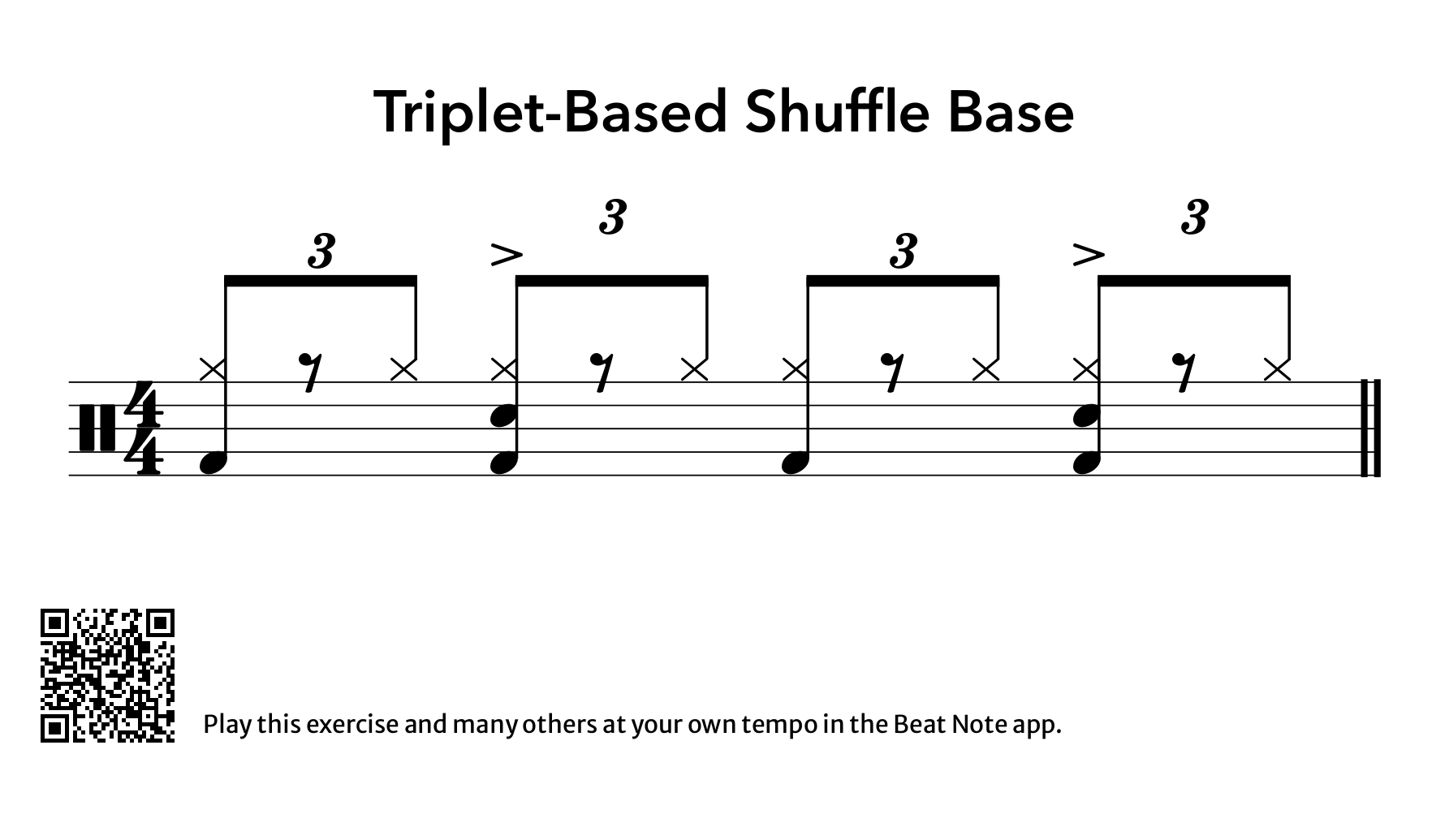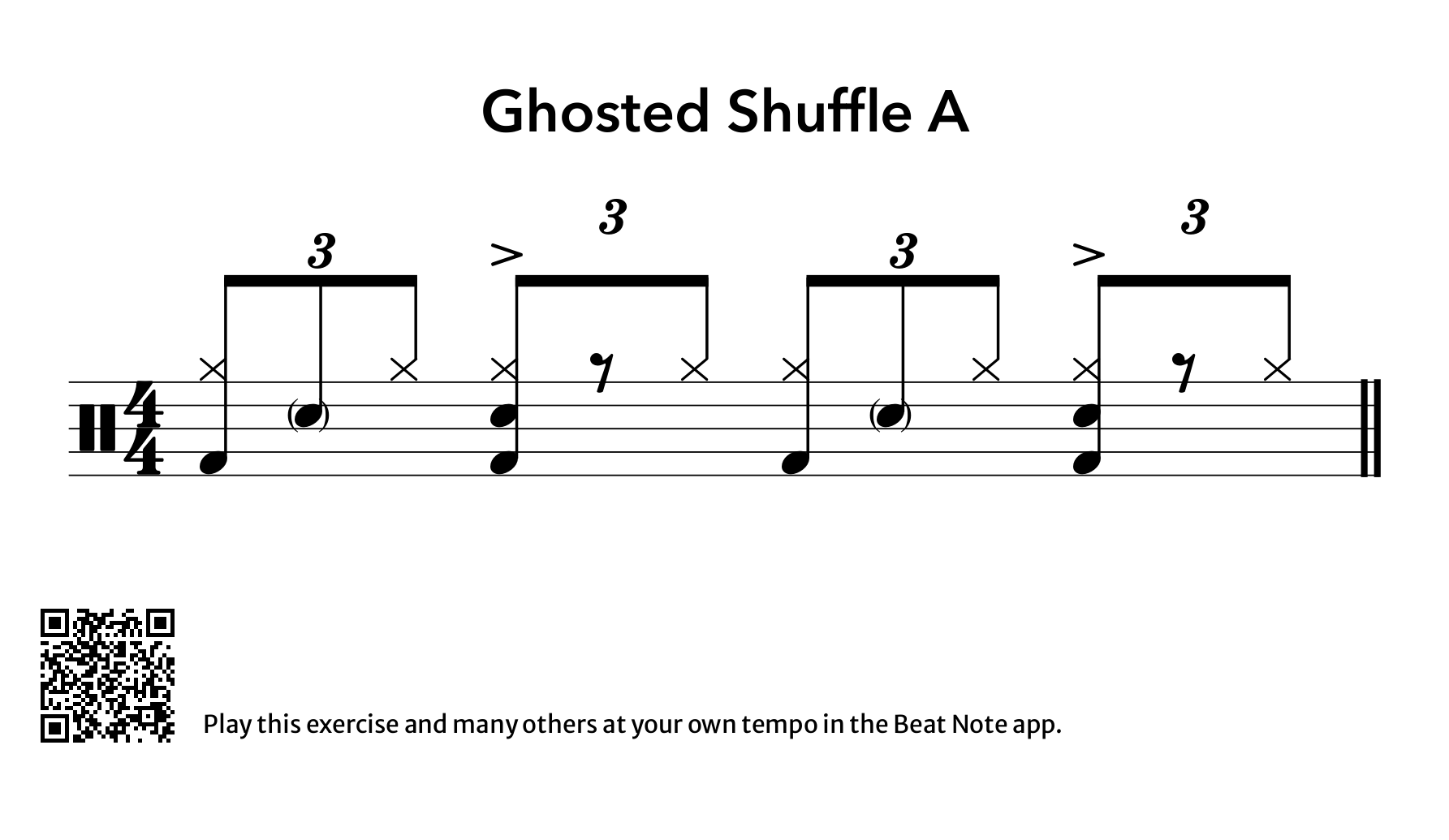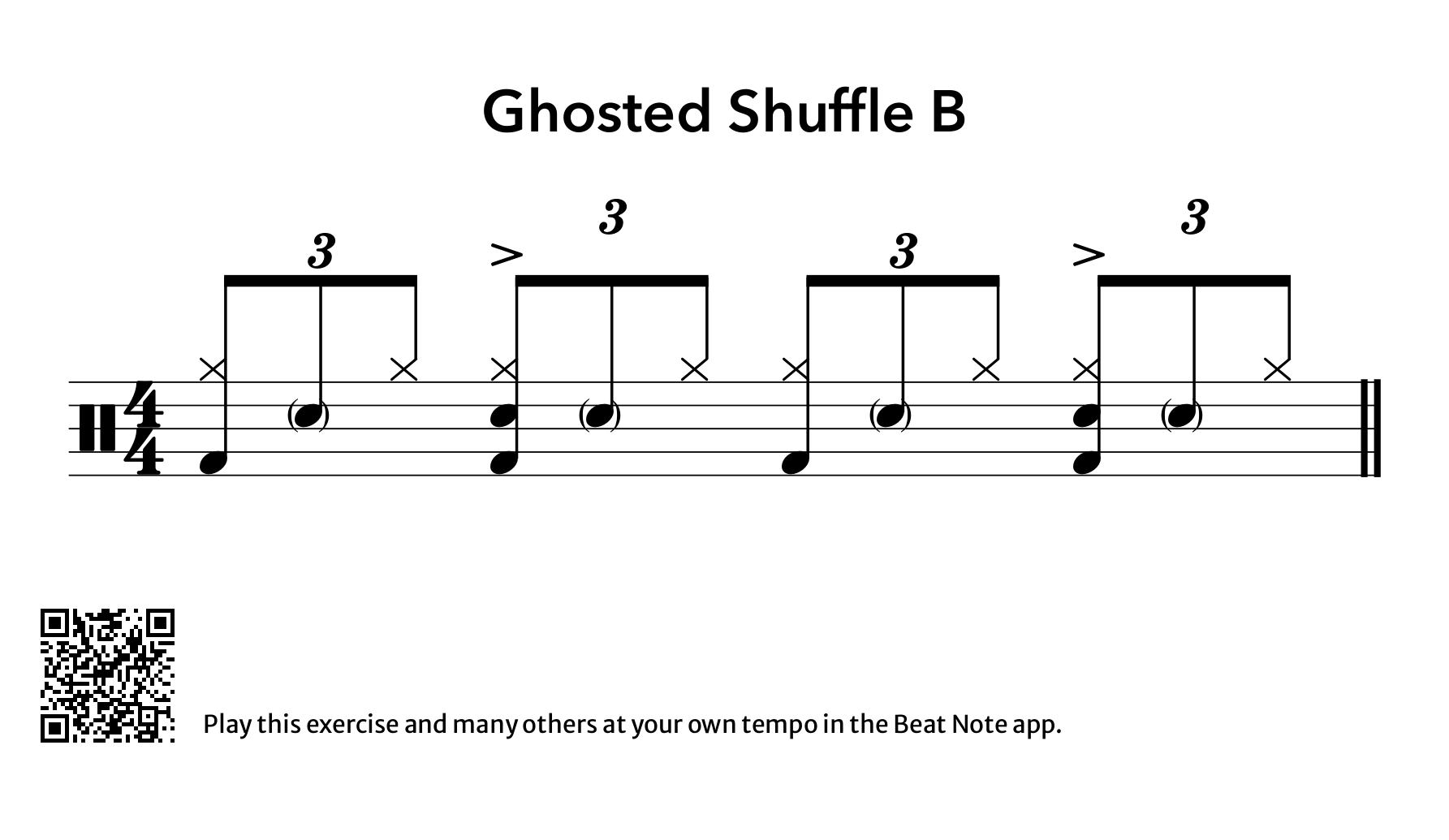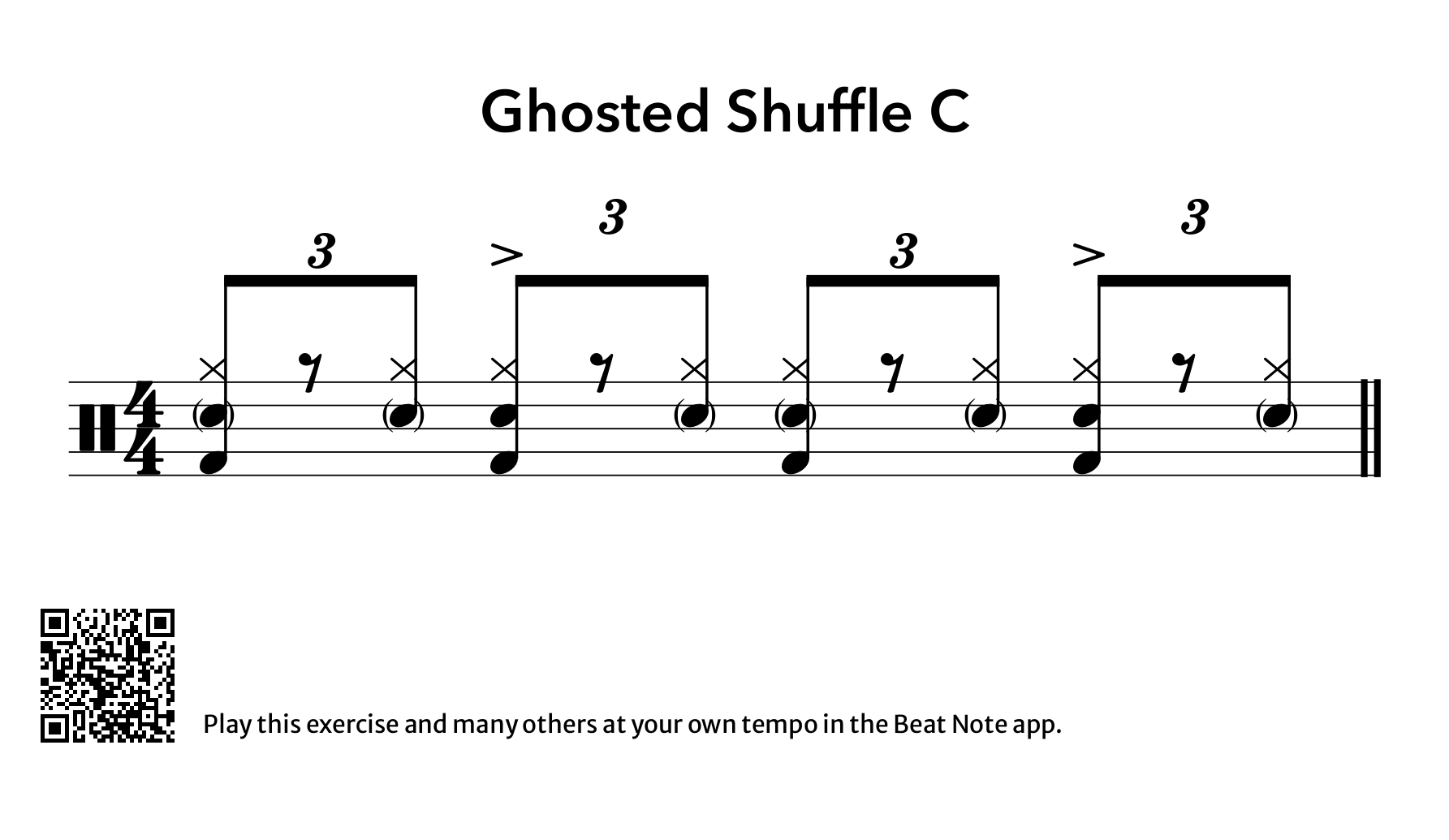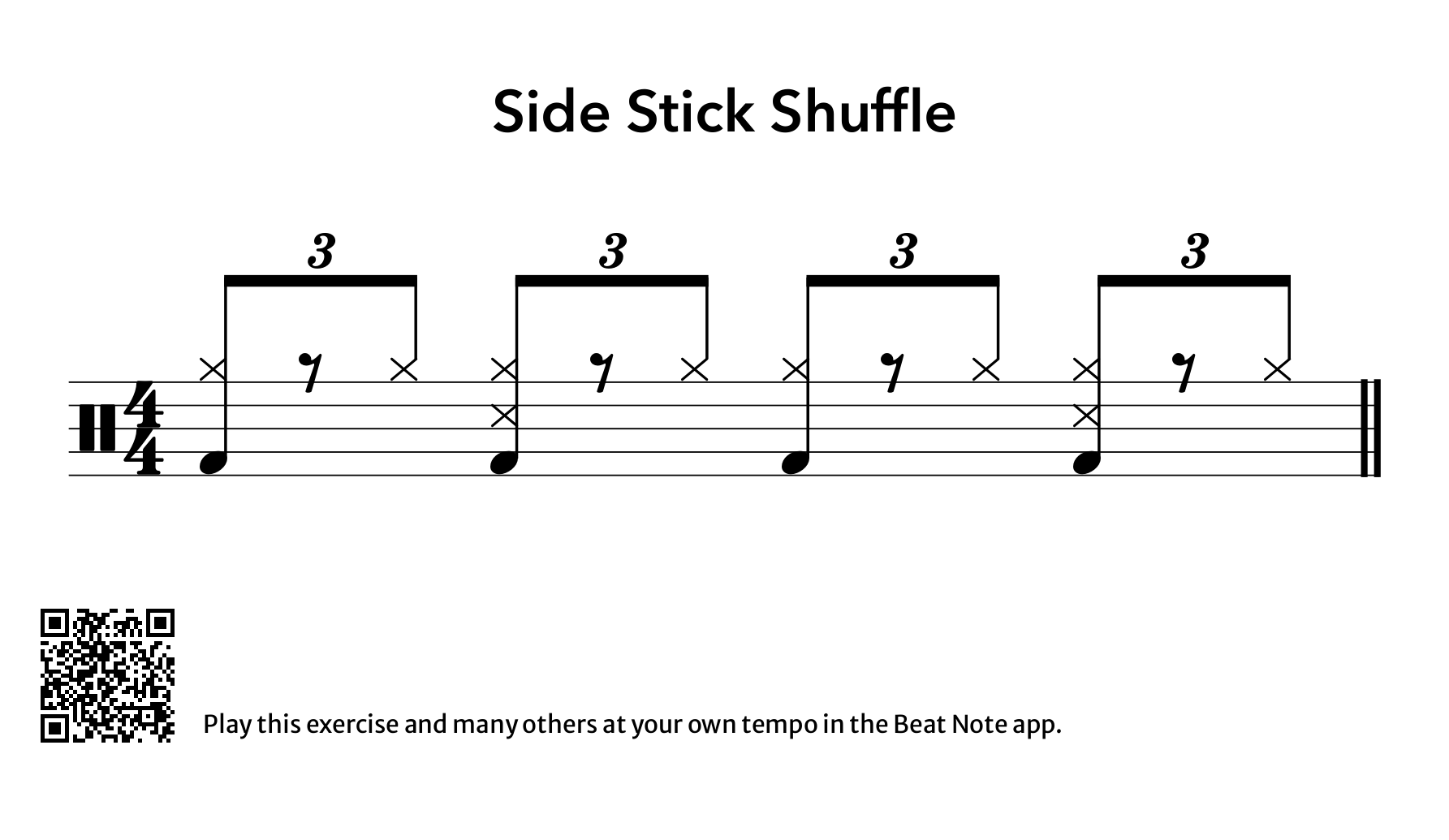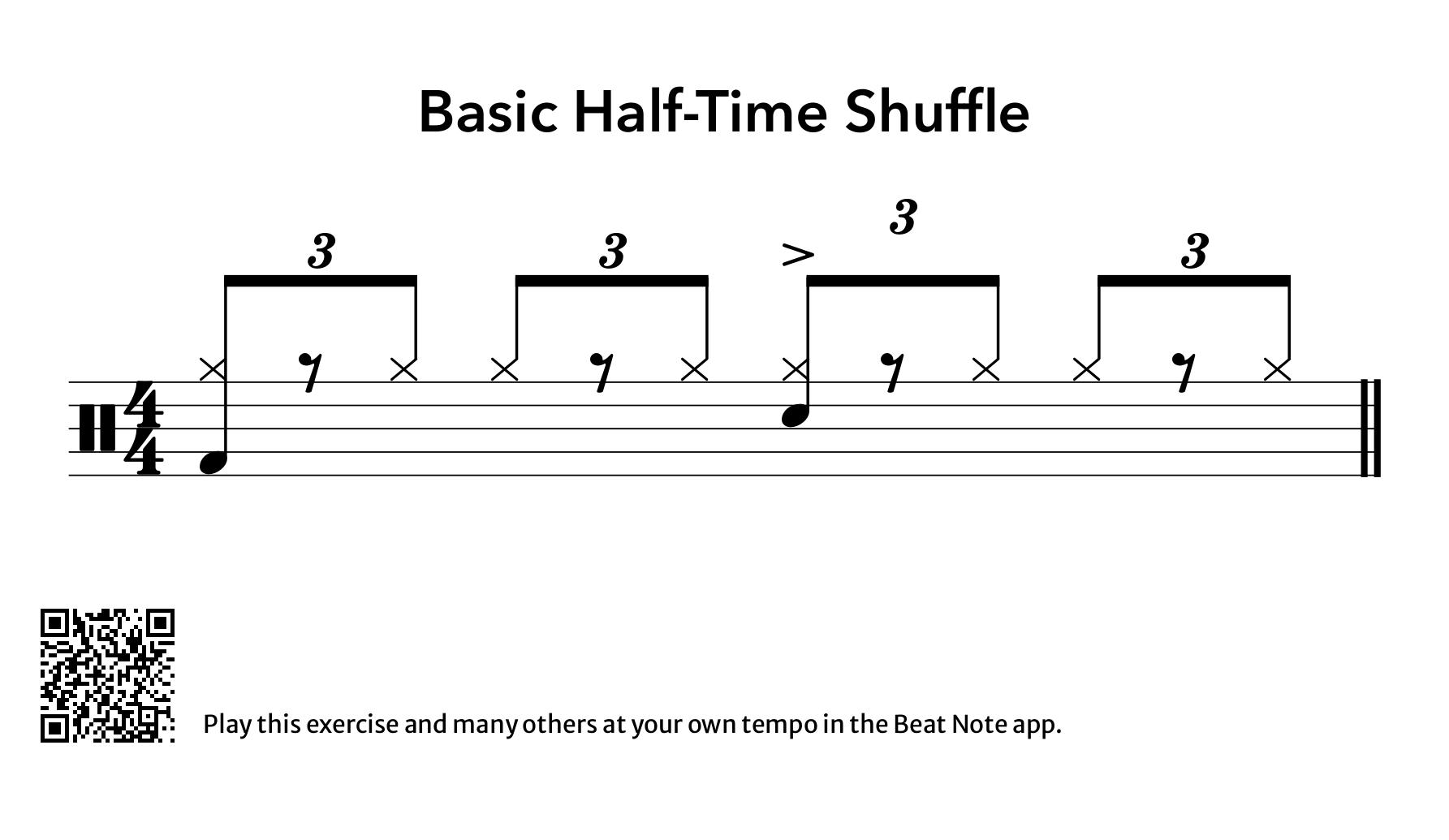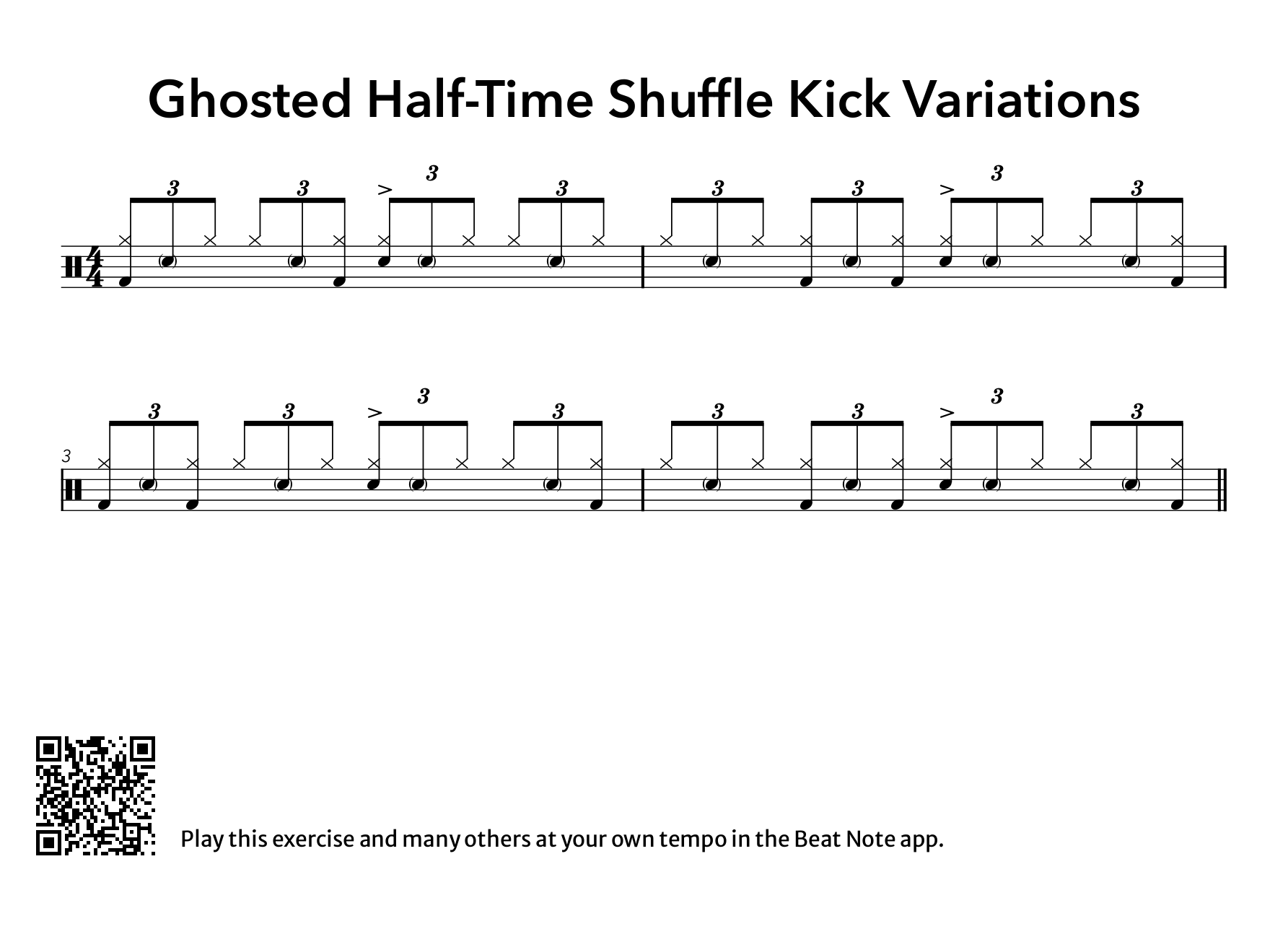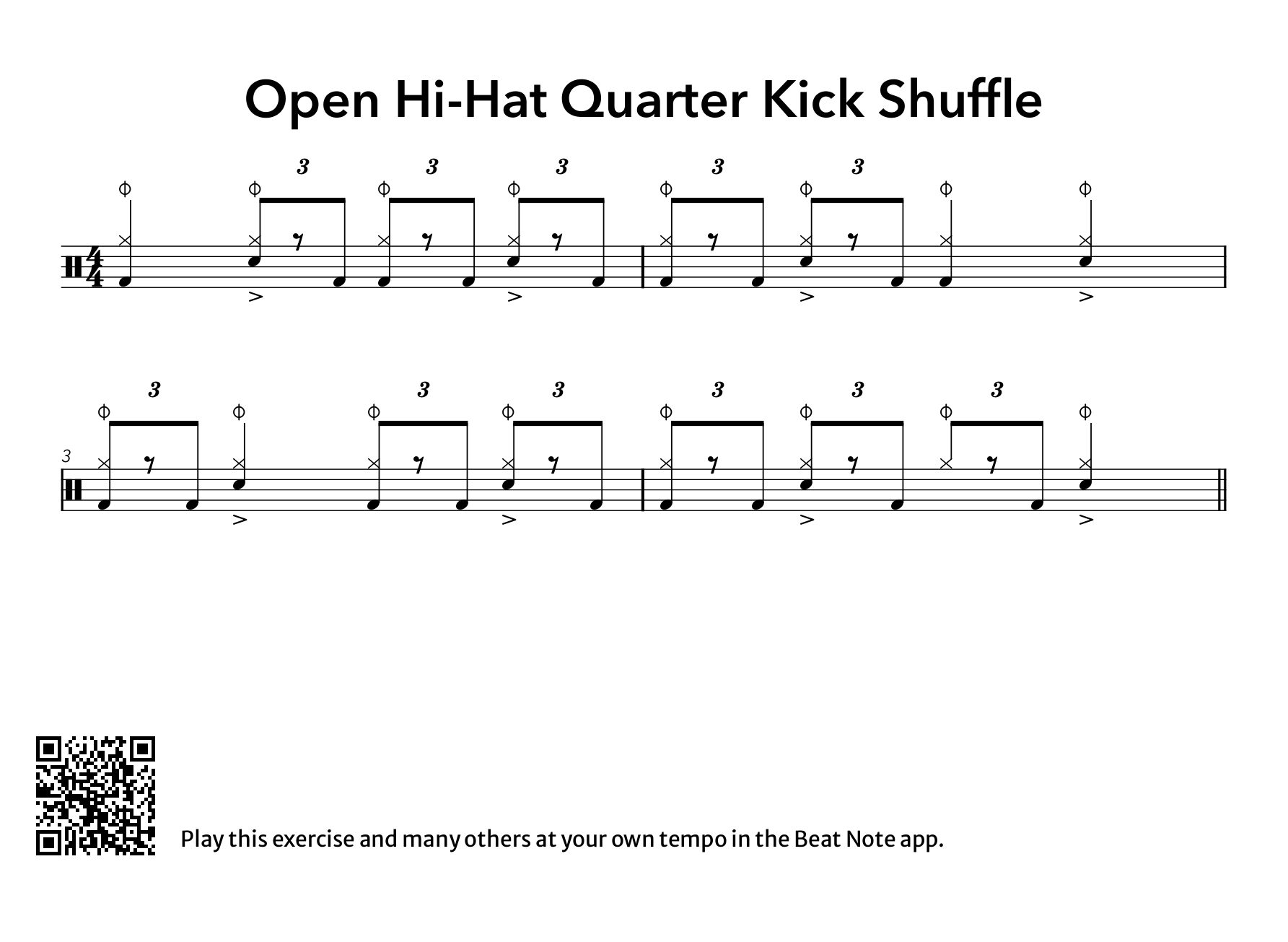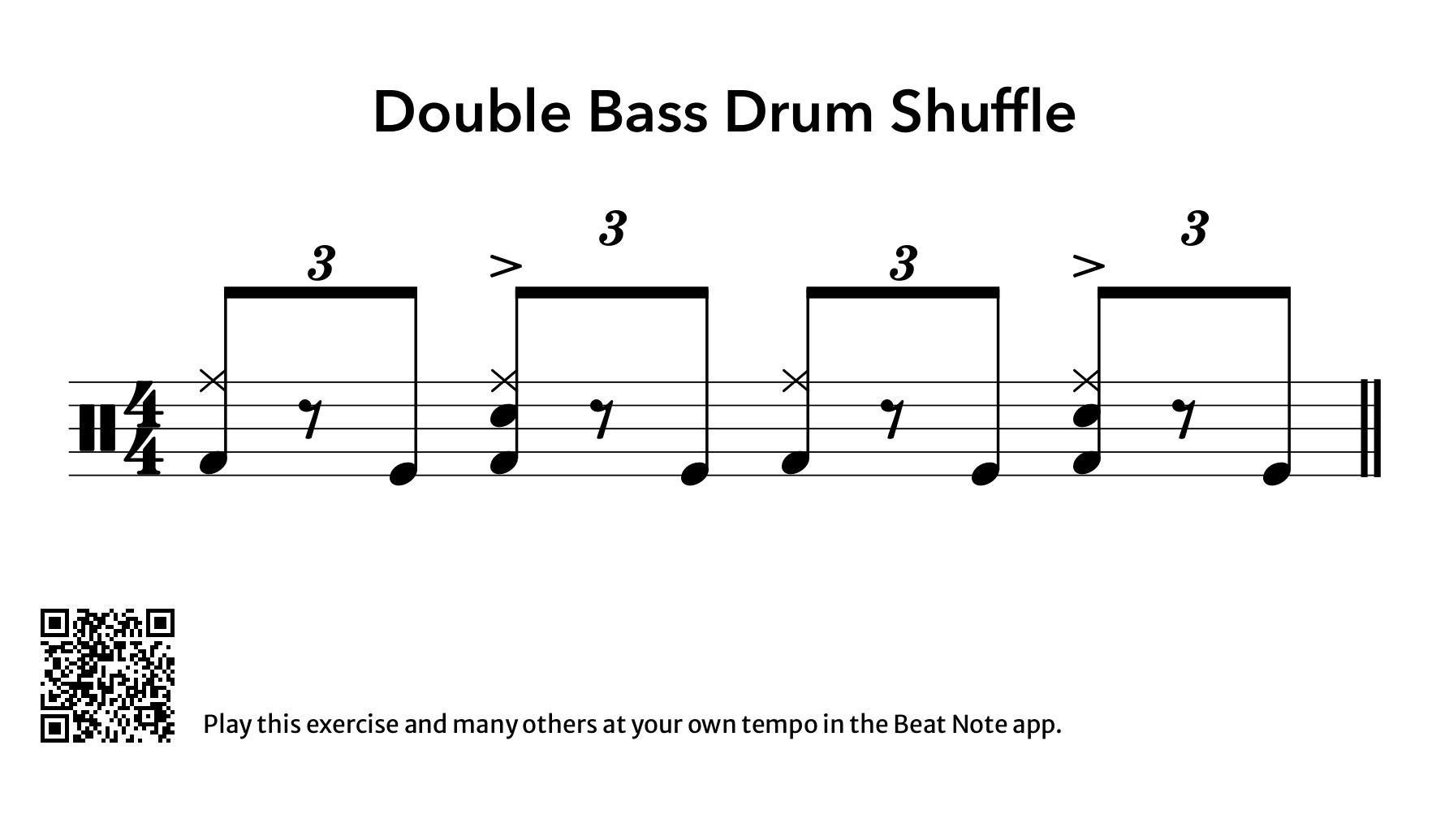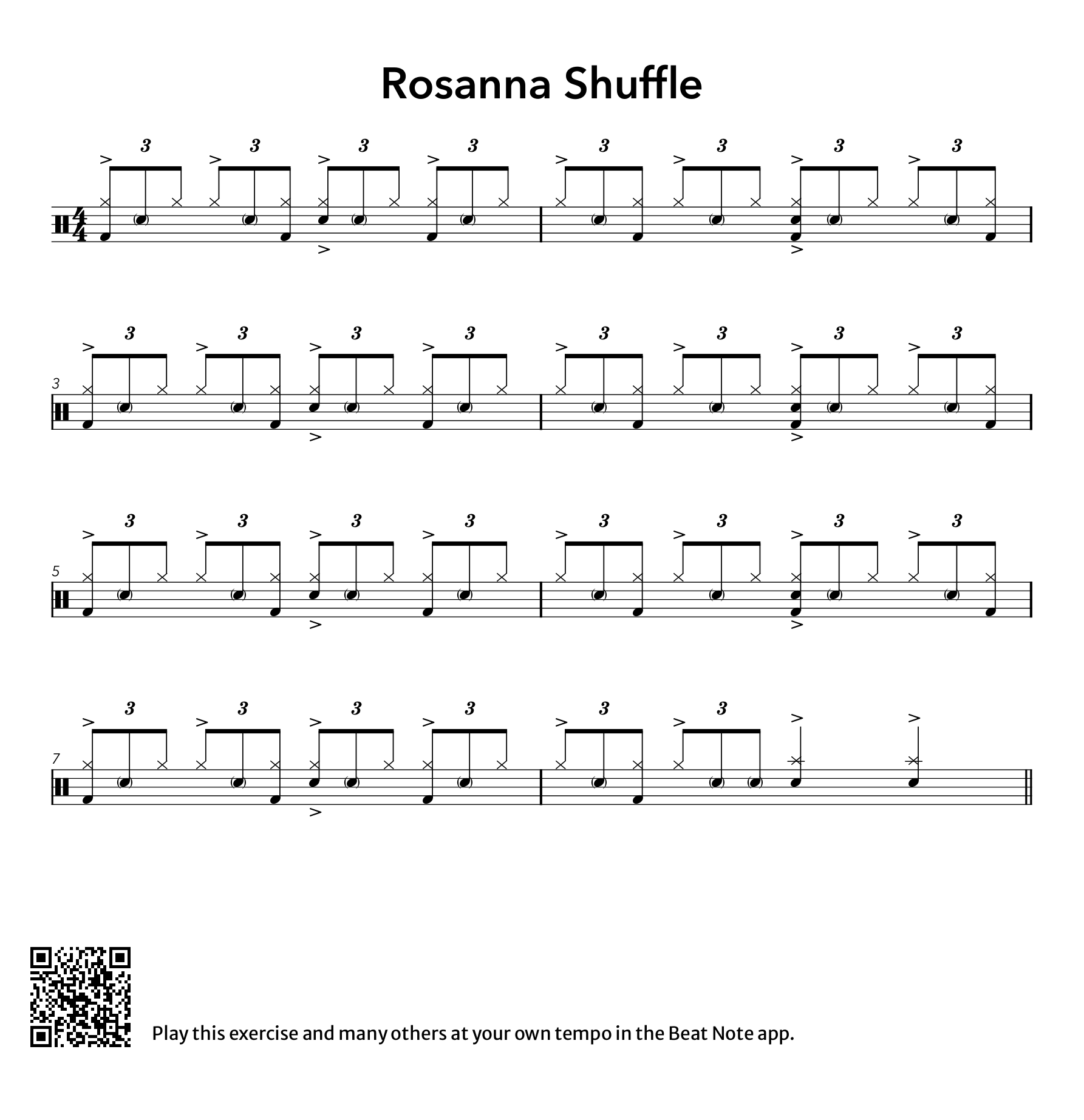There are so many tasty drum grooves to dive into and so little time to master them all. Let’s take a look at the iconic and multifaceted shuffle. There are, of course, many varieties of shuffles. Some are ternary (triplet) based, some are 16th based, and some groove between the cracks. The mighty shuffle transcends genres, and there are great examples in rock, country, blues, jazz, R&B, hip-hop, etc.
The more famous shuffles come from specific areas or specific players. Perhaps you’ve heard of a few of these? Purdie Shuffle, Porcaro half-time shuffle, James Gadson shuffle, Texas shuffle, Chicago blues shuffle, Country shuffle, Double bass drum shuffle, or not to forget the infamous Rosanna Shuffle. Check out the playlist at the end of this article to hear examples from the masters.
In This Article
What Makes a Shuffle Sound Unique?
This is a universal question for all grooves. The shuffle is a swing-based groove, or you could say it has a bounce, unlike its counterpart straight 8th or straight 16th-based grooves. The unique factor will come from the lilt you play it with and the way you season your groove.
Here’s a light, crunchy shuffle groove of mine:
Since shuffles are based on a swing feel, whether triplet or 16th-based, they all have the human bounce factor I mentioned. Jazz and blues are the roots of shuffles, so understanding the jazz ride pattern will deepen your feel.
What is the Shuffle Based On? Understanding the Jazz Ride Pattern
The ride cymbal note after each downbeat is called the skip note. It’s part of what makes the swing feel. How you interpret the spaces creates the feel. Fun fact: You can even swing a band with just quarter notes.
Basic Jazz Blues Ride Pattern
The foundational jazz blues ride pattern essential for understanding shuffles.
Open Basic Jazz Blues Ride Pattern in Drum Notation by Beat Note to change the tempo
Basic Jazz Ride Pattern
The standard jazz ride pattern, crucial for developing swing feel.
Open Basic Jazz Ride Pattern in Drum Notation by Beat Note to change the tempo
Of course, each player interprets this feel in their unique way. You can tighten the timing between the skip notes or relax them for a wide variety of swing feels. Then comes the more nuanced factors with dynamics from personal kit EQ, adding ghost notes, extra taps, buzzes, or diddles. Also, a bigger picture feel changer is where you emphasize the pulse; you can add weight to some or all of the downbeats, some or all of the upbeats, or even highlight a polyrhythm throughout. There are many options, but let’s start at the beginning.
Triplet-Based Shuffles
Let’s dive into some triplet-based shuffles! Here are the basics for the triplet-based shuffle. First, we get a handle on the jazz blues ride pattern with a backbeat; then, we subtract a note to get the base of the iconic shuffle feel, chugging along.
Triplet-Based Blues with Backbeat
Step 1: Learn the triplet-based blues pattern with a backbeat.
Open Triplet-Based Blues with Backbeat in Drum Notation by Beat Note to change the tempo
Triplet-Based Shuffle Base
Step 2: The base of the iconic shuffle feel, with the 2nd partial removed.
Open Triplet-Based Shuffle Base in Drum Notation by Beat Note to change the tempo
Adding Ghost Notes to Shuffles
Ghosted shuffle grooves are an excellent way to add subtle nuances and complexity to your drumming. You can create a more textured and dynamic shuffle pattern by incorporating ghost notes between the hi-hat notes. These ghost notes can fill in the gaps and provide a sense of forward momentum without overpowering the main groove.
Ghosted Shuffle A
Add texture to your shuffle with ghost notes between hi-hat notes.
Open Ghosted Shuffle A in Drum Notation by Beat Note to change the tempo
Ghosted Shuffle B
Another variation of ghosted shuffle groove.
Open Ghosted Shuffle B in Drum Notation by Beat Note to change the tempo
Ghosted Shuffle C
A third variation of ghosted shuffle groove for more practice.
Open Ghosted Shuffle C in Drum Notation by Beat Note to change the tempo
Side Stick and Cross Stick Shuffles
Sidestick Shuffle
Use this side stick version for dynamic shifts in your playing.
Open Sidestick Shuffle in Drum Notation by Beat Note to change the tempo
Use this side stick version for a dynamic shift rather than a typical back beat on your snare drum. This works great for song verses or to start at a lower volume to support a soloist.
Half-Time Shuffle Variations
A half-time shuffle flips the script on traditional shuffle grooves, stretching the feel across two measures. This spacious variation places the backbeat on beat 3, creating a laid-back, almost lazy swagger. It’s the secret sauce behind iconic tracks like Toto’s “Rosanna” (we have it notated at the end of this article!) and Led Zeppelin’s “Fool in the Rain.” Half-time shuffles open up space for intricate ghost notes and kick patterns, allowing drummers to weave complex textures within a deceptively simple framework.
Basic Half-Time Shuffle
The foundation of the half-time shuffle groove.
Open Basic Half-Time Shuffle in Drum Notation by Beat Note to change the tempo
Ghosted Half-Time Shuffle
Add ghost notes to your half-time shuffle for extra texture.
Open Ghosted Half-Time Shuffle in Drum Notation by Beat Note to change the tempo
Ghosted Half-Time Shuffle Kick Variations
Explore kick drum variations in the ghosted half-time shuffle.
Open Ghosted Half-Time Shuffle Kick Variations in Drum Notation by Beat Note to change the tempo
This rabbit hole is endless. There are tons of deep variations to explore. For a more advanced edge, crank up the heat into sextuplet-based grooves with linear fills.
Shuffle Variations On the Kick Drum
Open Hi-Hat Quarter Kick Shuffle
A rock-oriented shuffle with open hi-hat quarters and shuffle kick pattern.
Open Open Hi-Hat Quarter Kick Shuffle in Drum Notation by Beat Note to change the tempo
This groove sounds great, especially for rock. Try a tight closed hat sound for variety. Move the kick to different partials for fun grooves and a great foot workout.
Shuffles in Rock Music
Ready to unleash the fury of rock shuffles? Buckle up for double bass thunder and floor tom mayhem that’ll shake stadiums. These aren’t your grandpa’s blues grooves – we’re talking pure rock power that’ll have audiences headbanging in 12/8 time.
Rock Powerhouse Drumming
Double Bass Drum Shuffle
The iconic rock powerhouse double bass drum shuffle pattern.
Open Double Bass Drum Shuffle in Drum Notation by Beat Note to change the tempo
The iconic rock powerhouse, double bass drum shuffle. Use two bass drums, a double pedal, or split the parts between your floor tom and kick.
Arena Rock
Floor Tom Shuffle
The ever-useful floor tom-based shuffle for arena rock impact.
Open Floor Tom Shuffle in Drum Notation by Beat Note to change the tempo
The ever-useful floor tom-based shuffle. Move the pattern around the toms for variety. This also opens the door for creative drum-fill patterns.
Now that you know the basics, there is a ton of room to experiment. For example, try moving the backbeat to a different partial than 2 & 4 (or 3 for half-time), or mix and match the concepts above. Explore and enjoy the journey.
Classic Rock Shuffle: Toto’s Rosanna Shuffle
And finally, the Shuffle Groove that put Shuffles on the map for people who didn’t know what shuffles were: The timeless groove in Toto’s Rosanna. See fellow Drum Notation by Beat Note Creator Brandon Khoo break it down:
Shuffle from Toto's Rosanna
The Rosanna shuffle: Jeff Porcaro’s iconic half-time groove that blends laid-back feel with intricate ghost notes, challenging drummers since 1982.
Open Shuffle from Toto's Rosanna in Drum Notation by Beat Note to change the tempo
Here’s a playlist to delve deeper and hear the greats add their flavor to some of the most iconic shuffles.
As always, I hope you are enjoying Drum Notation by Beat Note and happy drumming!
Z
